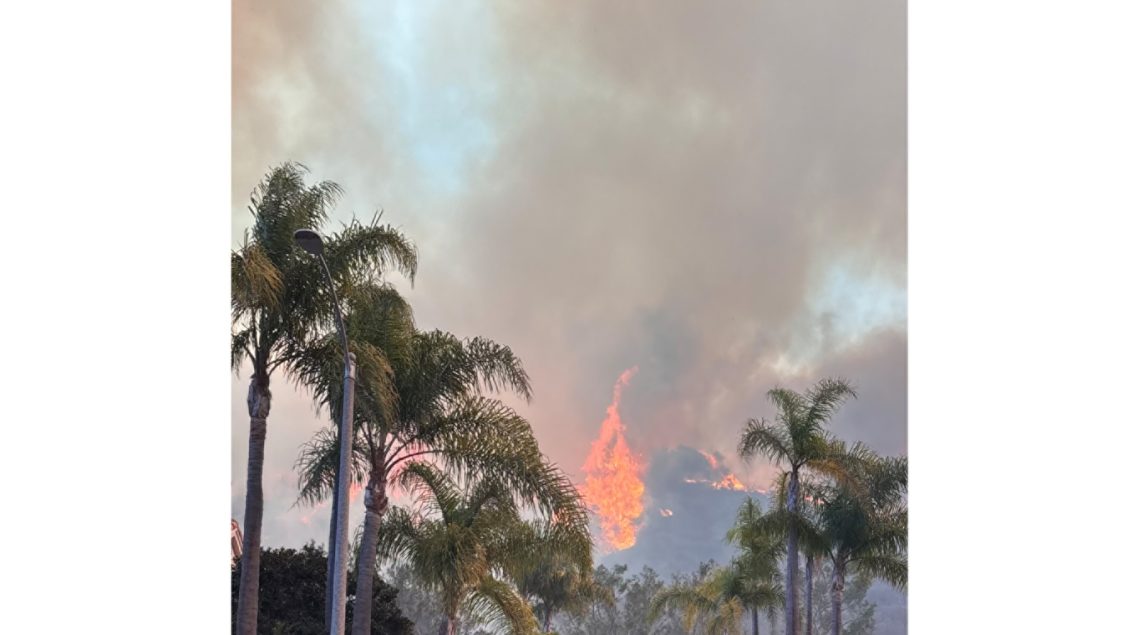The Losses are Profound as Los Angeles is Ravaged by Fire and Wind

As of 11:00 a.m. Pacific Time on January 8, the Santa Ana winds are still howling (although decreasing) across Los Angeles as the city grapples with an unprecedented wildfire event spurred by hurricane-strength gusts and dangerously dry conditions.
Beginning on the morning of January 7, roughly 20 miles west of Downtown L.A. in the mountains above the affluent, close-knit coastal enclave of Pacific Palisades and quickly spreading to the city’s precarious wildland-urban interface, there are now a quartet of major active wildfires raging in and around Los Angeles County: the Palisades fire, which has grown to nearly 3,000 acres and spread to western neighbor Malibu and threatened parts of Brentwood and Santa Monica to the east and southwest, respectively; the Eaton fire, located near the city of Pasadena to the northeast of Downtown L.A., has destroyed more than 2,000 acres; the fast-growing Hurst fire near Sylmar, in the far north of the San Fernando Valley, has claimed more than 500 acres; and the Woodley Fire, also in the San Fernando Valley near the Sepulveda Basin, has spread to 75 acres. Per the latest data from the California Department of Forestry and Fire Protection (CAL FIRE), all four fires are currently at zero containment and new, smaller fires have also erupted across the region. At least two deaths have been reported.
To date, a vast number of homes, businesses, and civic buildings—including schools, libraries, and reportedly, the Pacific Palisades fire station—have been torched and tens of thousands of Angelenos have evacuated from the impacted areas. The scene is nothing short of apocalyptic, the loss immeasurable.
Although the total scope of devastation won’t be fully known until the winds calm and the smoke clears, below is a running list of historically significant structures and local landmarks impacted by the catastrophic blazes that have erupted across L.A. and environs. This list will be updated as more information becomes available.
The Getty Villa
While its grounds were set ablaze yesterday as the Palisades fire exploded, the famed museum’s buildings and renowned collection of priceless Greek, Roman, and Etruscan antiquities have been spared despite some reports to the contrary on social media (and general confusion between the Getty Villa and the Richard Meier–designed Getty Center in Brentwood, which together comprise the J. Paul Getty Museum). “Some trees and vegetation on site have burned, but no structures are on fire, and staff and the collection remain safe,” confirmed the museum in an update published on social media late yesterday. A later update indicated that the complex, located in Pacific Palisades but widely associated with neighboring Malibu, will remain closed through Monday, January 13. First opened in 1974, the Getty Villa’s immersive campus was modeled after the Villa of the Papyri at Herculaneum by L.A. architects Robert E. Langdon, Jr. and Ernest C. Wilson Jr. An expansive, critically lauded campus revamp led by Machado Silvetti was completed in 2006. Although not under immediate threat, the Getty Center is currently closed to visitors.
The Eames House
Like the Getty Villa, another cherished architectural landmark in Pacific Palisades, Charles and Ray Eames’ Case Study House No. 8, appears to be safe for now. In an update published on Instagram the morning of January 8, the Eames Foundation wrote that the 1949 studio-residence was “unharmed by the wildfires … but the windblown fires continue to claim other homes in the community and bring the fires nearer.” The foundation adds that it is closely monitoring the situation and that a small number of objects were removed from the property by staff prior to mandatory evacuation orders. “The loss and displacement caused by these fires is staggering, and we stand in solidarity with everyone affected during this incredibly difficult time.” All public tours and visits to the National Historic Landmark–listed house museum have been suspended.
Case Study Houses
In addition to the Eames House, Pacific Palisades is home to several other surviving residences commissioned as part of Arts & Architecture magazine’s experimental Case Study Houses program; all were built in the late 1940s and early 50s. There is no information currently regarding Case Study Houses No. 9 (Entenza House, Charles Eames and Eero Saarinen), No. 18 (West House, Rodney Walker), or No. 20 (Bailey House, Richard Neutra) along with Case Study Houses outside of Pacific Palisades in other impacted areas such as Pasadena and Altadena.
The Topanga Ranch Motel
Although abandoned for years, this historic, bungalow-style motor court along the Pacific Coast Highway in Malibu is a beloved (and much-photographed) local landmark—the 1920s-era property was also on the cusp of a major restoration project that would have ultimately seen it reopen to visitors. Sadly, social media users have reported that it was lost in the fire along with nearby businesses flanking the PCH, including long-running roadside seafood destination the Reel Inn.
Corpus Christi Catholic Church
Completed in 1964, this midcentury church on Toyopa Drive in Pacific Palisades designed by noted L.A. architect Albert C. Martin (of Los Angeles City Hall and May Company Building fame) was destroyed by fire. Only the building frame remains standing. As noted by the city’s Historic Resources Inventory, the church was an “excellent example of New Formalist institutional architecture.” Another significant church in the neighborhood, the Charles Moore–designed St Matthew’s Episcopal Church (1983), has not reported damage as of this publication.
Pasadena Jewish Temple and Center
This Conservative synagogue, housed in a Mission Revival-Style building on Pasadena’s North Altadena Drive since 1945, was destroyed in the Eaton Fire. As reported by NBC4 Los Angeles, the Torah scrolls were safely removed by a congregate during the evacuation process.







